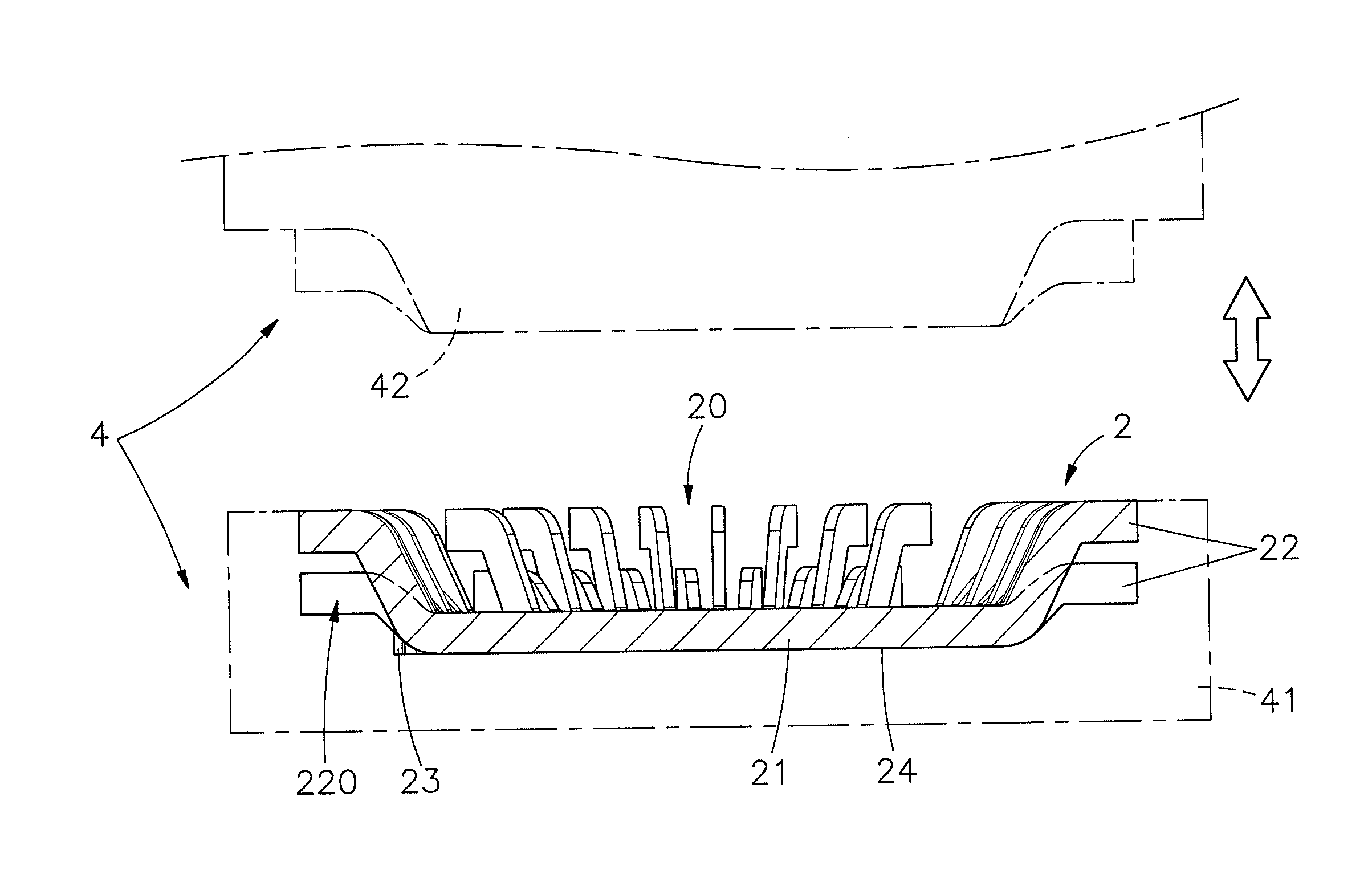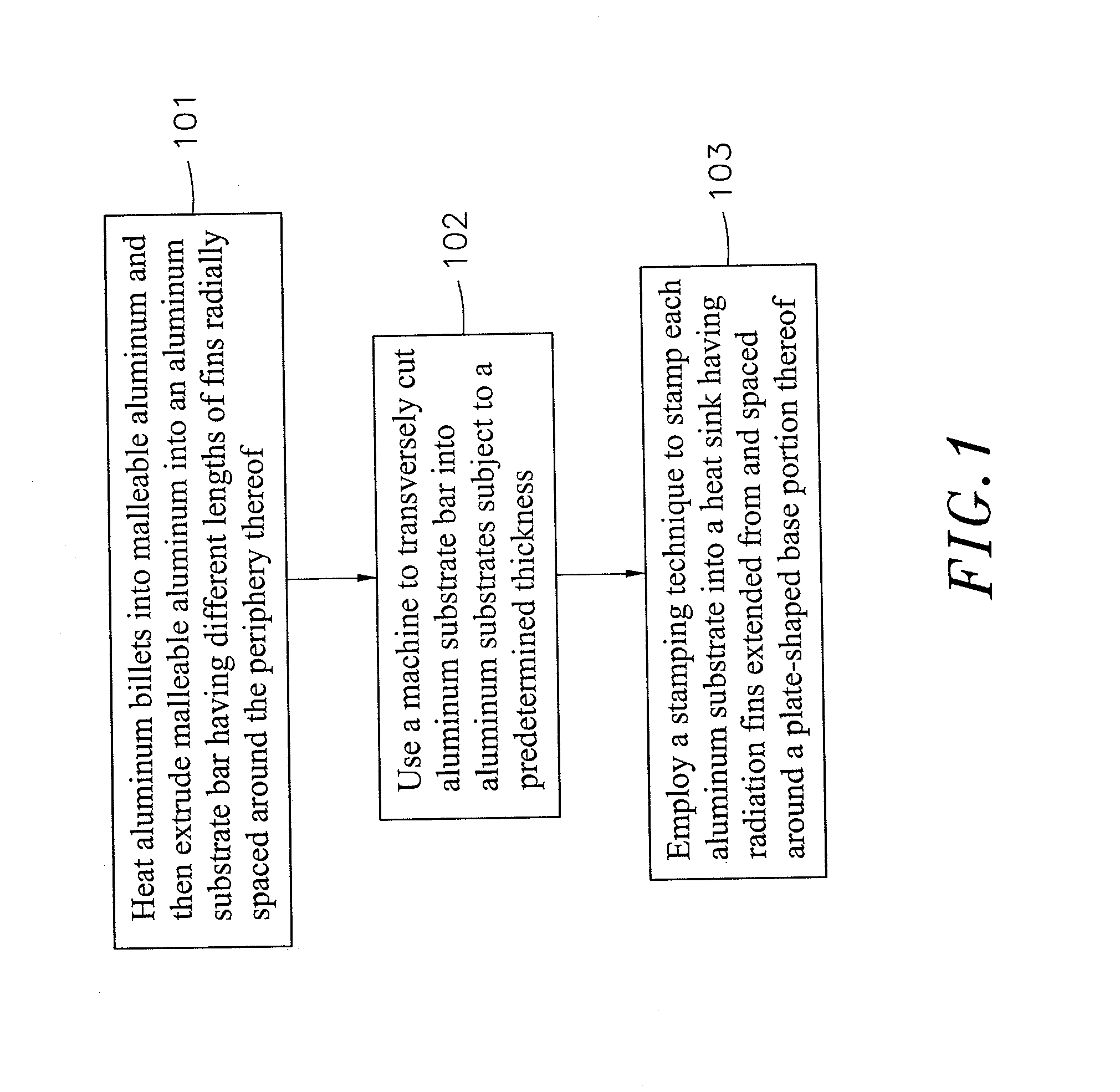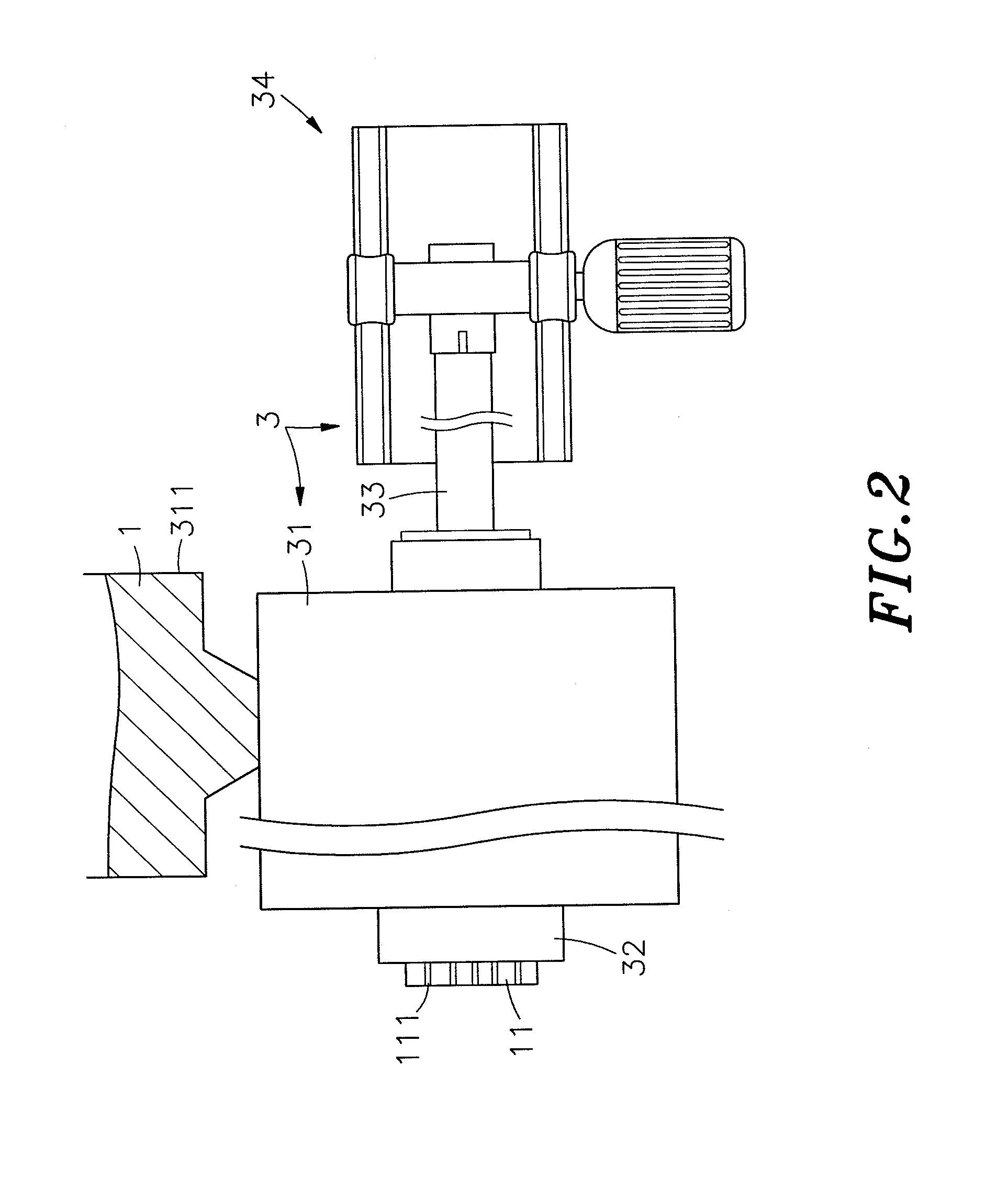Heat sink fabrication method
- Summary
- Abstract
- Description
- Claims
- Application Information
AI Technical Summary
Benefits of technology
Problems solved by technology
Method used
Image
Examples
Embodiment Construction
[0023]Referring to FIGS. 1-6, a heat sink fabrication method in accordance with the present invention comprises the steps of:[0024](101) heating aluminum billets into malleable aluminum 1 and then extruding malleable aluminum 1 into an aluminum substrate bar 11 having different lengths of fins 111 radially spaced around the periphery thereof;[0025](102) using a machine to transversely cut the aluminum substrate bar 11 into multiple aluminum substrates 11 subject to a predetermined thickness; and[0026](103) employing a stamping technique to stamp each aluminum substrate 11 into a heat sink 2 having radiation fins 22 extended from and spaced around a plate-shaped base portion 21 thereof.
[0027]During fabrication, aluminum billets are prepared and heated into a molten condition, and then molten aluminum 1 is put in a hopper 311 of an extruding machine 3 and fed into an extruder unit 31 where aluminum 1 is maintained in a malleable condition, and a screw 33 is rotated by a motor drive 34...
PUM
| Property | Measurement | Unit |
|---|---|---|
| Thickness | aaaaa | aaaaa |
| Thickness | aaaaa | aaaaa |
| Length | aaaaa | aaaaa |
Abstract
Description
Claims
Application Information
 Login to View More
Login to View More - R&D
- Intellectual Property
- Life Sciences
- Materials
- Tech Scout
- Unparalleled Data Quality
- Higher Quality Content
- 60% Fewer Hallucinations
Browse by: Latest US Patents, China's latest patents, Technical Efficacy Thesaurus, Application Domain, Technology Topic, Popular Technical Reports.
© 2025 PatSnap. All rights reserved.Legal|Privacy policy|Modern Slavery Act Transparency Statement|Sitemap|About US| Contact US: help@patsnap.com



